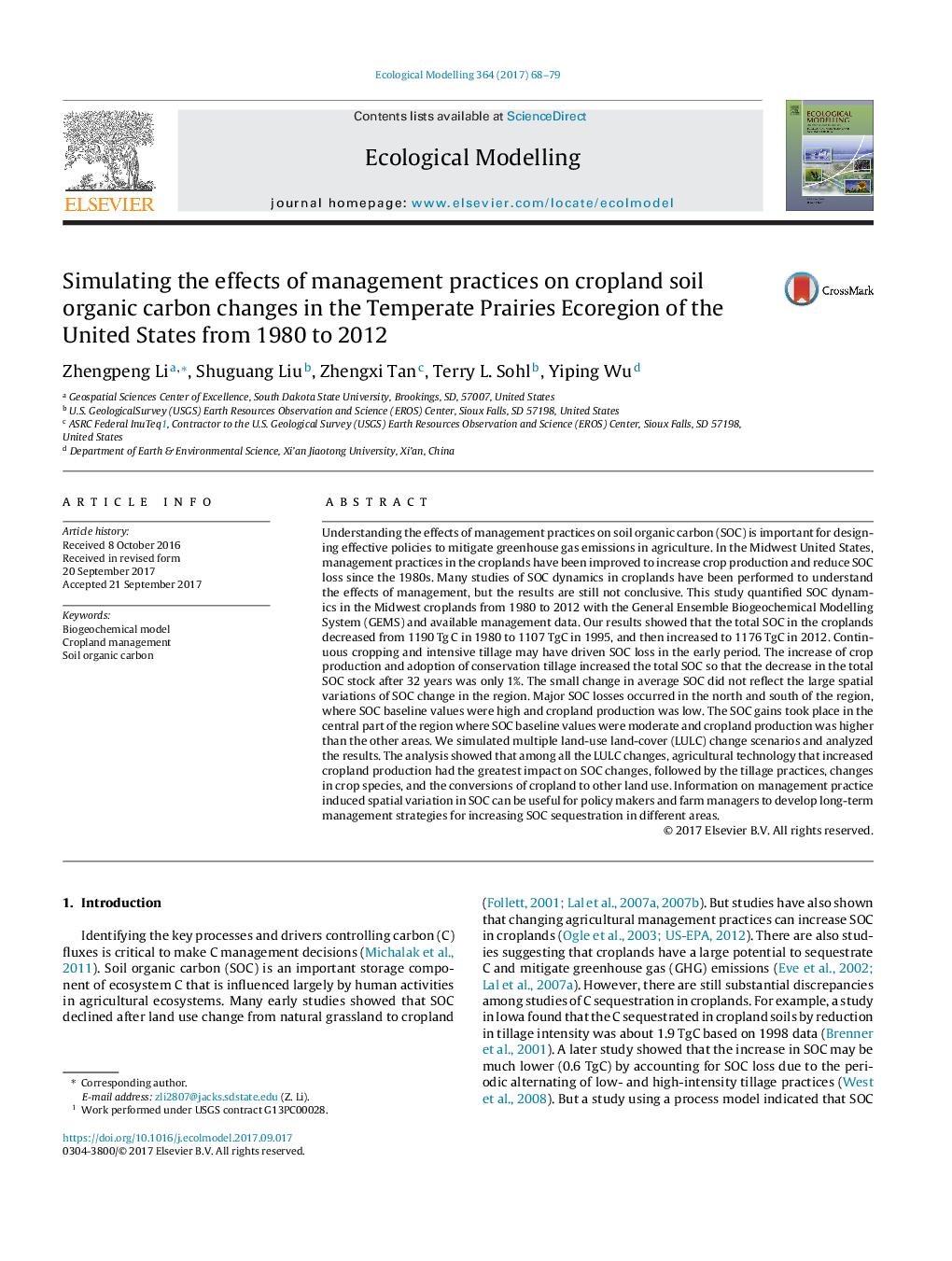| کد مقاله | کد نشریه | سال انتشار | مقاله انگلیسی | نسخه تمام متن |
|---|---|---|---|---|
| 5741969 | 1617382 | 2017 | 12 صفحه PDF | دانلود رایگان |
- Total cropland SOC declined between 1980-1995 and then increased to 2012.
- The cropland SOC changes showed clear spatial differences in the region.
- Changes in cropland production had the largest impacts on the cropland SOC changes.
Understanding the effects of management practices on soil organic carbon (SOC) is important for designing effective policies to mitigate greenhouse gas emissions in agriculture. In the Midwest United States, management practices in the croplands have been improved to increase crop production and reduce SOC loss since the 1980s. Many studies of SOC dynamics in croplands have been performed to understand the effects of management, but the results are still not conclusive. This study quantified SOC dynamics in the Midwest croplands from 1980 to 2012 with the General Ensemble Biogeochemical Modelling System (GEMS) and available management data. Our results showed that the total SOC in the croplands decreased from 1190 Tg C in 1980 to 1107 TgC in 1995, and then increased to 1176 TgC in 2012. Continuous cropping and intensive tillage may have driven SOC loss in the early period. The increase of crop production and adoption of conservation tillage increased the total SOC so that the decrease in the total SOC stock after 32 years was only 1%. The small change in average SOC did not reflect the large spatial variations of SOC change in the region. Major SOC losses occurred in the north and south of the region, where SOC baseline values were high and cropland production was low. The SOC gains took place in the central part of the region where SOC baseline values were moderate and cropland production was higher than the other areas. We simulated multiple land-use land-cover (LULC) change scenarios and analyzed the results. The analysis showed that among all the LULC changes, agricultural technology that increased cropland production had the greatest impact on SOC changes, followed by the tillage practices, changes in crop species, and the conversions of cropland to other land use. Information on management practice induced spatial variation in SOC can be useful for policy makers and farm managers to develop long-term management strategies for increasing SOC sequestration in different areas.
Journal: Ecological Modelling - Volume 365, 10 December 2017, Pages 68-79
